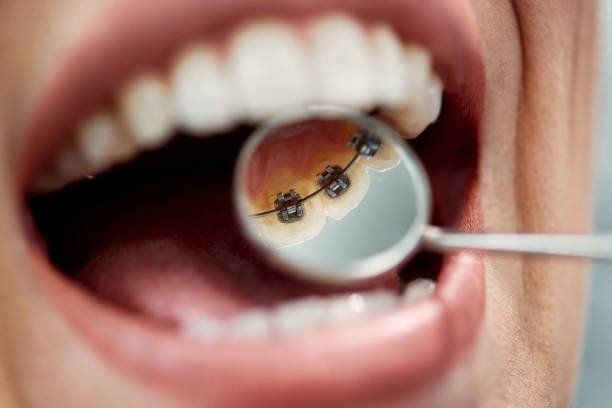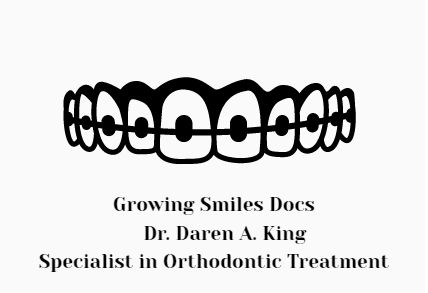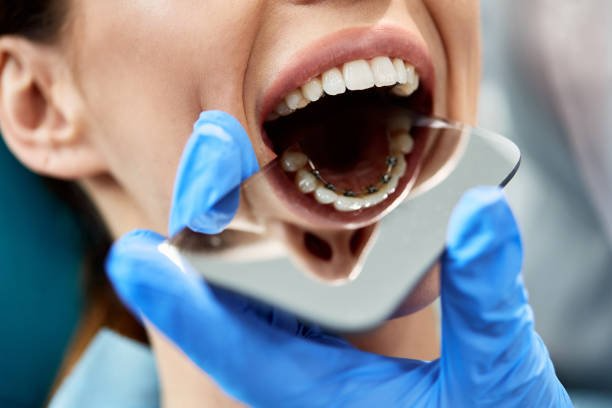What is a lingual brace? Why do you need them?
- By Dr. Daren King
- •
- 27 Jan, 2022
- •
Lingual Braces and Why they are important

Lingual braces sit on the inner side of the teeth compared to the outer like traditional braces. This makes lingual braces perfect for those that may need braces but want them to be hidden braces. They are an invisible form of braces that correct just as well as traditional braces.
For patients that meet the criteria,
lingual braces can be a great choice for those that would rather have hidden braces.
They are fairly close to traditional braces but may not be for everyone. Read
on to find out everything you need to know about lingual braces and if they
will be the right fit for you.
What Are Lingual Braces?
Lingual braces are braces that are attached to the inner or lingual side of the teeth. Unlike other invisible braces that instead cover the whole surface of your teeth lingual are attached to the back of the teeth. These hidden braces give you the same benefits as traditional braces.
While they may take some getting used to lingual braces are a great choice as work very efficiently. Lingual braces are made up of a stronger material than traditional braces. The stronger material helps then to align your teeth faster than other types of braces. Lingual braces can straighten your teeth in as little as a year with less pain in many cases.
What Situations Require Lingual Braces?
Lingual braces are not for everyone, you will need to meet certain criteria to wear them. Lingual braces are not recommended for children under thirteen. Any young adult or adult that meets the criteria for traditional braces will be able to try lingual braces.
Growing
Smile Dentistry Brooklyn
if you have need severe orthodontic
treatment
you may not be able to get lingual braces. You will need to
schedule a consultation to talk with your doctor to see if lingual braces are
the right choice for you.
Are There Disadvantages to Using
Lingual Braces
There are many benefits to getting
different types of braces such as lingual but as with many things in life,
there are also some disadvantages. It is best to know the good and bad parts of
lingual braces before you decide to take the plunge.
The Cost of Lingual Braces
Lingual braces can be far more expensive than traditional braces. There are a few reasons behind the price difference such as:
· Lingual braces can be tricky to put in because they are on the inner teeth which mean they may take longer to place
· Not all dentists work with lingual braces meaning the cost could be a little higher due to the different skill levels needed
· Traditional braces have many hands twisted parts while lingual have parts custom twisted robotically
· Customized lingual braces to fit inside of the mouth perfectly will cost more
When looking to get traditional braces you
can expect to pay around $3,000 - $8,000. Lingual braces can set you back
anywhere from $5,000 - $13,000. The cost will be depending on your location and
the exact set you will have placed in your mouth. The customization the higher
the cost. Most dentist offices will offer some form of payment plan to help
alleviate some of the cost.
Lingual Braces Impair Your Speech
With every word that you say your tongue touches the back of your teeth whether it is the lower or upper ones. This can create a speech impediment as the braces will be in the way and make you talk with a lisp. You should get used to talking correctly with your lingual braces in about a month or so.
For some, this is not an issue for others
it may be a deal-breaker. If you are still struggling, you may need to go to a
speech therapist to learn how to talk smoothly with lingual braces. This is not
very common, but some will need a little extra help.
Wearing Lingual Braces
If you or your teen child need a little help with your teeth but would prefer hidden braces, then lingual braces are perfect. You will have a strong material working hard to straighten your teeth all while keeping them hidden. You may pay a little more money but in the end, you will be left with a beautiful smile much faster.

